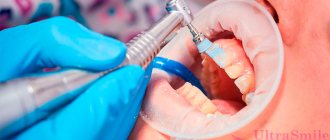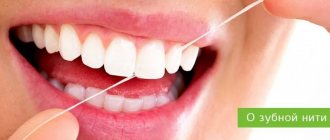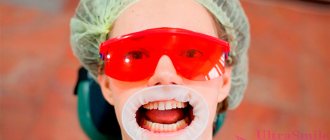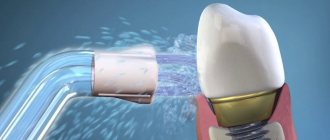What can you eat after cleansing?
After the procedure, dentists impose a number of restrictions on the patient’s eating behavior. In the first 2-3 days, foods that irritate tooth enamel are excluded from the diet: sour, hot, salty, sweet. The sensitivity of teeth after ultrasonic cleaning of stone is increased: bright tastes and temperature changes provoke pain.
Products containing dyes are prohibited. The list of what not to eat after brushing your teeth for tartar includes:
- black tea and coffee;
- colored carbonated drinks;
- chocolate;
- soy and balsamic vinegar;
- mustard and curry spices;
- red wine and grapes;
- berries (blueberries, blueberries, currants);
- red and orange vegetables;
- sweets containing dyes.
A number of products are recommended for consumption. They strengthen tooth enamel and prevent the formation of plaque and caries. Dentists advise eating dairy products in any form. Fruits and vegetables, particularly apples, reduce the amount of tartar. It is useful to drink diluted apple juice, which dissolves plaque.
The best method for professional cleaning is
Removing hard dental deposits always consists of two stages: firstly, the direct removal of the stone, and secondly, the mandatory polishing of the teeth after removing the stone, plaque, and pigment. After removing deposits, microparticles of plaque always remain on the surface of the tooth, which create a rough surface on which everything will stick again very quickly. Therefore, polishing is a must!
Removal of dental plaque and a massive layer of pigment should be done only with the help of ultrasound. But polishing can be done after this either with special polishing brushes and pastes - this process is reminiscent of brushing teeth with an electric toothbrush... Or with the help of AirFlow - this is a polishing method using a special apparatus that forms a water-air mixture with abrasive particles.
Important: professional teeth cleaning ideally combines ultrasonic calculus removal + AirFlow polishing. If you only have mild pigmentation, then you can only do AirFlow.
Laser teeth cleaning
Enamel and tartar have different percentages of water content - this is the basis for the mechanism of action of the laser procedure. There is much more water in tartar, so the laser beam promotes explosive boiling of water and crushing of harmful deposits.
In addition to removing unwanted deposits on teeth, the laser has a bactericidal effect. Thanks to this, pathogenic bacteria in the oral cavity die and the enamel is strengthened.
Laser treatment is an effective measure even in terms of external effect - the enamel becomes one or two shades lighter. In addition to cleaning, there is also laser whitening - you need to understand that these are different events.
Tips after professional teeth cleaning
After this hygienic procedure, the sensitivity of the gums and teeth occasionally increases. This is not dangerous, the discomfort goes away and does not cause further complications. To carry out prevention, a special gel with an antiseptic and antimicrobial effect for local use is applied to the gums. The gel is applied twice a day for 14 days after the procedure.
The second option to avoid discomfort is to rinse your mouth with a weak antiseptic solution or other special preparations. It should be borne in mind that alcohol solutions are prohibited during the first seven days after the procedure.
In the first week, it is useful to use soft toothbrushes, gradually replacing them with hard bristles. It is useful to use dental floss or a low-power irrigator.
Complications due to improper professional oral hygiene
Like any medical procedure, plaque cleaning and scaling have some risks. Let's look at these risks and give some recommendations on how to avoid or minimize them.
Cracked enamel and chipped teeth
Mechanical damage in the form of enamel cracks and chipped teeth occurs due to improper use of ultrasound. Ultrasound can severely damage tooth enamel and the teeth themselves. This injury occurs for various reasons:
- operator inexperience
- lack of time,
- poorly calibrated device,
- the device power is too high,
- worn out or non-original attachment for the ultrasonic device.
Teeth can crack and chip even later after brushing, for example, after several days or weeks. That is why, if a Dial-Dent patient undergoes cleaning elsewhere, we automatically remove the guarantee for the work performed by us.
Ceramic crowns split, veneers chipped, fillings falling out
Damage to dental restorations (crowns, veneers, fillings) associated with improper and unprofessional teeth cleaning occurs both due to the inexperience of the operator, due to haste, and when using outdated devices or worn out ultrasonic tips.
Scratches and roughness on the surface of the teeth, at the roots
The causes of roughness on the surface of teeth can be:
- operator inexperience
- rush,
- unsatisfactory polishing.
Using older Air Flow units with coarse cleaning agent (40 microns) requires careful polishing after cleaning. After using the coarse powder, rough spots remain on the teeth, which are polished with a special paste and brush. If the hygienist skips this step or the hygienist has little time, the polishing will be unsatisfactory. Scratches may also remain if manual cleaning techniques are used. To avoid scratches from using hand tools, it is important to have your cleaning done by an experienced hygienist.
Scratches on implants and abutments (adapters between the crown and dental implant)
Removing plaque and tartar from implants requires special attachments. These are special nozzles with Teflon or a special plastic coating applied to the tip. The absence of such attachments in the hygienist’s arsenal or poor wear control leads to poor-quality cleaning and the appearance of mechanical damage to implants and abutments.
Trauma to the gums and gum-tooth junction
Tartar and plaque are mainly localized near the gums. Therefore, the operator almost always works with both Air Flow and ultrasound near the gum, touching the gum, and in some cases under the gum. Working under the gum is very important, but at the same time more difficult than working above the gum. A lot of stone and plaque can be localized just under the gum in periodontal pockets. High-quality cleaning of pockets leads to the fact that they become smaller, do not become inflamed, and gum disease (gingivitis and periodontitis) does not progress.
The difficulty of cleaning teeth under the gum and in gum pockets lies in the fact that the operator works “by touch”. In deep pockets, visual control is impossible. Therefore, the operator's manual experience is of paramount importance.
When working in gum pockets, you cannot use conventional Air Flow and conventional ultrasound. We work only with the AirFlow Prophylaxis Master device, which has intelligent ultrasound that reduces power upon contact with a tooth, and not with tartar, and a special fine-grained cleaning agent that can be used on soft tissues without the risk of injuring them.
Emphysema is a common complication of Air Flow
Emphysema occurs when pressurized air from the Air Flow is blown into soft tissue (for example, into a deep gum pocket). At the same time, the soft tissues swell so that the face can change configuration. When pressing on the swelling, a crepitus effect occurs (a sound like when walking on fresh snow). This can often occur if there are problems with the gums due to periodontitis. This condition is very unpleasant. Antibiotics and treatment by a surgeon may be required. It often occurs when the operator is inexperienced or when the equipment is poorly configured, when the pressure in the Air Flow cleaning apparatus exceeds that required for cleaning.
Traumatic inflammation of the nerve (pulpitis)
The nerve in the tooth can be damaged as a result of incorrect ultrasound treatment of the tooth. Ultrasound creates high-frequency vibrations that have such powerful energy that they easily injure not only the surface of the teeth, but also the nerve inside.
When removing stone from the surface of a tooth, operator experience is very important! The ultrasonic tip should not rest on the tooth surface. It is necessary to constantly move the nozzle. The second point is that the nozzle should not be brought to the teeth at angles close to perpendicular. When removing tartar from a tooth, it is important to fine-tune the ultrasound machine. Select its power and a sufficient amount of water entering the working field. If there is an error in the tinctures, overheating of the tooth and nerve death may occur! Many stone removers do not have power settings or settings for the amount of water at all.
It is better to have your teeth cleaned in good clinics, such as Dial-Dent, where we remove tartar with the most modern AirFlow Prophylaxis Master device. It has intelligent ultrasound, which upon contact not with a stone, but with a tooth, automatically resets the power, and flexible settings for power and coolant according to its quantity and temperature.
How to brush your teeth? Cleaning Techniques
Proper brushing of teeth includes several stages, each of which is aimed at cleaning one of the surfaces of the teeth, as well as various parts of the oral cavity. For adults, the correct sequence of actions is as follows:
- With your mouth wide open, clean the outer surfaces of your teeth using sweeping movements from the gums to the cutting edge. This must be done with both the upper and lower jaw.
- Do the same on the inside of your teeth. When cleaning your front teeth, turn the head of the toothbrush across the teeth rather than along them.
- Clean the chewing surfaces of your teeth with vigorous horizontal movements.
- To remove plaque and food debris more thoroughly, brush in a circular motion.
- Clean your tongue using the special pad on the back of the toothbrush head or using the bristles itself. You need to move from the root of the tongue forward. Do not press too hard on the root of the tongue, as this may cause vomiting.
- It is recommended to end the evening brushing with a light massage of the gums - to do this, make circular movements with your mouth closed. If you have inflammation or bleeding gums, or enlarged gum pockets, you should avoid this.
- After brushing is completed, the interdental spaces should be cleaned using dental floss. To do this, take a piece of thread 40-50 centimeters long, wrap it around your middle or index fingers and carefully insert it between your teeth, making several movements back and forth. Unwind the floss gradually, cleaning each gap with a fresh section and avoiding putting too much pressure on the gum edge. Flosses are also recommended to be used after each meal to remove food debris from the interdental space.
- The final stage is rinsing your mouth with warm or cold water and washing your brush. For additional protection against unpleasant odors and bacteria, you can use a mouthwash such as ASEPTA Fresh, which contains witch hazel, sage and chamomile extracts that can eliminate inflammation and unpleasant odors.
Complex of symptoms
Increased sensitivity of teeth after cleaning from tartar can manifest itself in different ways. Most often, patients feel:
- discomfort when chewing food and brushing teeth,
- aching pain of varying degrees of intensity when leaving a warm room into the cold, eating hot and cold foods and drinks.
Normally, this condition can persist for 2-7 days. If enamel hyperesthesia does not go away or worsens over time, do not delay your visit to the dentist.
The harms and benefits of professional teeth cleaning
There is much controversy regarding the procedure. Some patients find it useful, while others claim that the procedure is dangerous for dental health. Dentists have long spoken on this issue: the procedure is useful in moderation. Too frequent cleaning causes harm instead of benefit.
The norm is to perform the procedure twice a year (with an interval of six months). If you follow this simple schedule, no harm will be caused to the enamel.
The exception is the presence of crowns, bridges, and removable dentures. In patients with such elements in the oral cavity, tartar and plaque from the remains of bacterial activity form more quickly. Therefore, these patients receive cleanings every three to four months. Cleaning is a useful procedure, all causes of caries are removed, the enamel is not damaged.
The first step is to remove the stone using specialized tools, laser or ultrasound. Then the plaque, which is finer in structure, is removed. For this, specialized pastes and brushes are used. Then the teeth are varnished with fluoride to strengthen the enamel layer. The result is healthy teeth without signs of tartar or plaque. At the same time, the smell from the oral cavity disappears. Therefore, no damage to the teeth from the procedure is observed.
Causes of inflammation
Unpleasant sensations almost always occur after dental procedures. The main reason why inflammation occurs is the increased sensitivity of hard and soft tissues. Oral sensitivity can be an individual characteristic of the patient or a consequence of gingivitis, periodontitis, periodontal disease and other gum diseases. Often the cause of such problems is tartar.
Exacerbation of the pathology also provokes medical intervention, and after cleaning, gum inflammation intensifies. However, if you follow all the doctor’s recommendations, the unpleasant symptoms subside within a few hours or days.
The causes of gum inflammation after professional teeth cleaning can also be:
- enamel microcracks;
- caries;
- incorrectly selected toothpaste;
- toothbrush too hard;
- soft tissue injuries;
- mucosal lesions;
- inflammation of the gums;
- pulpitis;
- periodontitis.
Daily cleaning rules
Teeth should be brushed 2 times a day. Morning cleansing should be done before meals, and evening cleansing should be done after. It is not recommended to carry out this procedure more than 2 times to avoid abrasion of tooth enamel. After each meal, you can use a rinse or floss.
The recommended duration of the oral hygiene procedure is 3-5 minutes. During a given period of time, a person manages to make the optimal number of cleaning movements, sufficient to completely get rid of food debris, accumulated plaque and microorganisms.











